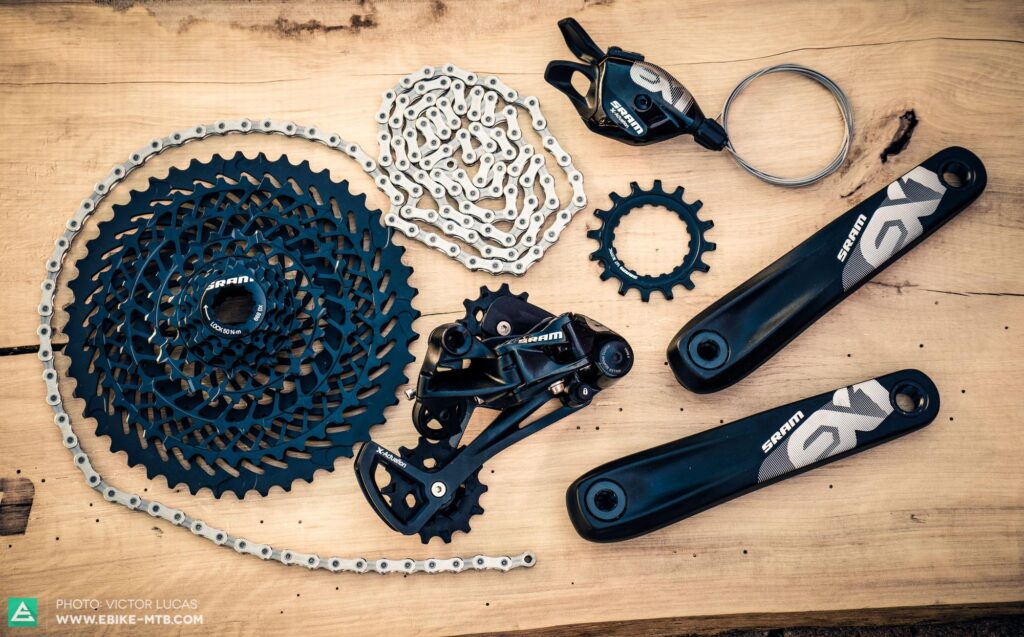SRAM Challenges UCI Gear Rules: The Fight Over the 10-Tooth Cog
In a bold maneuver that is set to shake the foundations of competitive cycling, SRAM, a leading manufacturer of bicycle components, has officially challenged the Union Cycliste Internationale (UCI) over its gear regulations, specifically concerning the contentious 10-tooth cog. This development comes amidst an ongoing debate within the cycling community about the implications of gearing innovations, which many argue could alter the sport’s landscape as we know it. The crux of the dispute lies in whether the UCI’s current gear limitations effectively promote fair competition or stifle technological advancement that could enhance performance. As SRAM pushes for more lenient regulations that would allow for the use of smaller cogs, the conversation intensifies, raising questions about the future of racing standards and the balance between tradition and progress in cycling.
SRAM Strives for Innovation Amid UCI’s Stifling Gear Regulations
In a bold move to redefine competitive cycling, SRAM is pushing back against the UCI’s stringent gear regulations, particularly concerning the controversial use of a 10-tooth cog. This innovative component offers enhanced performance capabilities, allowing cyclists to achieve higher speeds while maintaining better control over their gearing. However, the UCI’s restrictive policies aimed at standardizing gear ratios have created a challenging environment for SRAM, who argues that such limitations stifle technological advancements and the evolution of the sport. By prioritizing innovation, SRAM is advocating for a more progressive approach that embraces new technologies rather than inhibiting them.
SRAM’s challenge is not just about a single cog size; it’s emblematic of a larger battle over the future of cycling innovation. The company has been vocal in highlighting several key points:
- Competitive Edge: A 10-tooth cog allows for greater acceleration and higher top speeds, crucial in professional races.
- Technical Development: Restricting gear options dampens the incentive for brands to develop cutting-edge solutions.
- Cyclist Demand: Cyclists are increasingly seeking customizable gearing options to match their racing styles and terrain variability.
Despite resistance from governing bodies, SRAM remains committed to forging a path that promotes both innovation and individual performance in the pursuit of cycling excellence.
The Implications of a 10-Tooth Cog: Performance versus Compliance
The introduction of a 10-tooth cog in SRAM’s gear offerings has ignited a passionate debate within the cycling community, pitting performance enthusiasts against regulatory bodies like the UCI. On one hand, the performance benefits of a smaller cog are significant. Cyclists can experience enhanced acceleration and improved cadence management, particularly in competitive scenarios where every second counts. Riders are now able to maintain higher speeds without increasing pedal resistance, revolutionizing sprinting tactics and putting more power at the rider’s disposal. Key advantages include:
- Improved Gear Ratios: Finer control over cadence, enabling optimal power output.
- Increased Speed: The ability to achieve higher speeds while maintaining a steady cadence.
- Better Acceleration: Quicker power engagement in sprints and climbs.
However, the challenge posed by SRAM’s innovation raises compliance questions regarding the UCI’s existing gear regulations. Critics argue that such alterations may evolve racing into a contest of engineering rather than pure athleticism. To illustrate the conflict, the following table outlines critical concerns over the implications of gear variation on competitive cycling:
| Concern | Performance Impact | Regulatory Stance |
|---|---|---|
| Competitive Equity | Unequal advantages based on technology | Calls for stricter limits on gear ratios |
| Accessibility | Higher costs for advanced gear | Potential barriers for amateur cyclists |
| Innovation Stifling | Limits on future technological advancements | Concerns about preserving traditional cycling values |
Proposed Solutions for Harmonizing Gear Standards in Professional Cycling
In light of SRAM’s recent challenge to the UCI’s existing gear regulations, various stakeholders in the cycling industry are proposing several methods to harmonize gear standards. First, a collaborative committee composed of manufacturers, riders, and regulatory bodies could be established to regularly review and adapt gear specifications. This committee would focus on researching advancements in gear technology and ensuring that standards reflect both innovation and safety. Key considerations for this group would include:
- Performance enhancement through new technologies
- Safety standards for competitive events
- Environmental impact of manufacturing processes
Additionally, implementing a phased approach to the introduction of new gear standards could allow manufacturers and teams to adapt gradually. For instance, the adoption of new cog configurations could start in junior-level competitions before extending to elite events, giving teams time to prepare and adapt their equipment. To facilitate this transition, a suggested timeline for the proposed changes could resemble the following:
| Year | Implementation Stage |
|---|---|
| Year 1 | Research & Development Phase |
| Year 2 | Junior Competition Testing |
| Year 3 | Evaluation & Feedback Period |
| Year 4 | Full Implementation |
The Way Forward
In summary, SRAM’s challenge to the UCI’s gear regulations marks a significant turning point in the ongoing debate over technological advancements in cycling gear. As the company advocates for the inclusion of the 10-tooth cog-a component that could dramatically enhance gear efficiency and performance-the cycling community finds itself at a crossroads. The outcome of this fight could redefine competitive cycling and influence equipment standards for years to come. With both sides holding firm to their positions, the future of gear regulations remains uncertain as the UCI prepares to address SRAM’s challenge. Stakeholders and athletes alike will be watching closely, as the implications of this dispute extend beyond the racing circuit, touching on broader themes of innovation, fairness, and the evolution of the sport. As developments unfold, it is clear that this debate will continue to shape the landscape of competitive cycling well into the future.











